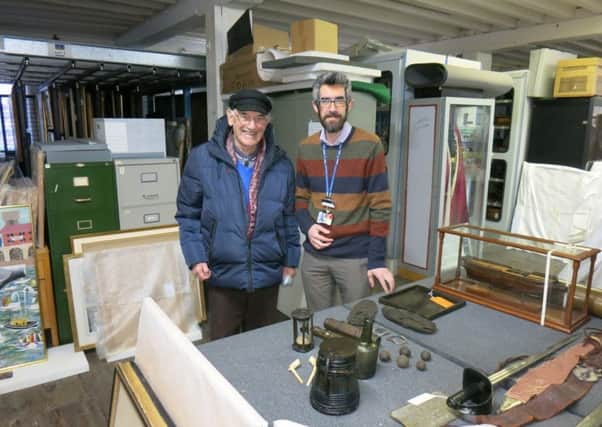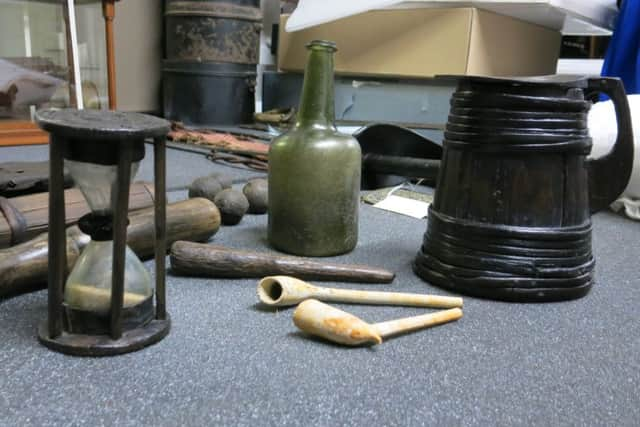Fisherman gives historic artefacts to naval museum


A handful of everyday items including shoes, a tankard and grapeshot have been gifted to The National Museum of the Royal Navy (NMRN) in Portsmouth Historic Dockyard by Arthur Mack, who found the underwater wreck nearly 40 years ago.
A keen fisherman, Arthur, of Eastney, was at sea in 1979 when he made his remarkable discovery.
Advertisement
Hide AdAdvertisement
Hide AdThe 84-year-old said: ‘We were out fishing and our nets snagged on something. As we pulled them up, they brought up a large piece of timber with wooden treenails and iron bolts – so we knew we were talking about a wooden ship.


‘My friends John Broomhead and Commander John Bingeman helped identify the wreck as HMS Invincible and the rest, as they say, is history.’
He had rediscovered the wreck of HMS Invincible, considered by many to be one of the most significant warships ever built. She was built by the French in 1744 and captured by the British on May 3, 1747.
Her 74-gun capacity and design was copied globally and her class became the backbone of the Royal Navy up to the end of the sailing navy and the beginning of the age of steam.
Advertisement
Hide AdAdvertisement
Hide AdOver the years Arthur has collected and conserved a number of artefacts from the wreck including a wooden square plate, glass wine bottle, two shoes and a tankard featuring the initials of a sailor onboard.
These and other items have now been donated to the NMRN in Portsmouth Historic Dockyard for recording and safekeeping while the remainder of the wreck is excavated.
It’s hoped a permanent display will one day be created as a result of the donations.
Known as the Diving Deep — The HMS Invincible 1744 Project, the display will look at the effort to recover lost artefacts.
Advertisement
Hide AdAdvertisement
Hide AdIt’s been run in partnership with The Maritime Archaeology Sea Trust (MAST), the NMRN and Bournemouth University and is supported by the National Lottery through the Heritage Lottery Fund.
Arthur added: ‘We’ve been closely involved with the project for nearly 40 years and we are still not finished. But I was keen to donate the artefacts to the National Museum in the meantime.’
Archaeologist and wreck site licensee Dan Pascoe welcomed the donation: ‘Arthur is very experienced in conservation and has cared for the artefacts really well. We value his involvement in the project and long may it continue.’
Christopher Gale, senior curator at The National Museum of the Royal Navy said: ‘We are delighted that Arthur has chosen to donate these artefacts.
Advertisement
Hide AdAdvertisement
Hide Ad‘The variety and quality of these items are exemplary and it is a wonder that they have spent well over 200 years at the bottom of the Solent.
‘One particular highlight is the wooden tankard. Research by Arthur has led to this object being personally connected to an Issac Robertson, who served on the ship.
‘With the ongoing work to excavate and survey the remains of the HMS Invincible, these items will add greatly to the exhibitions being planned for this material in the future.’